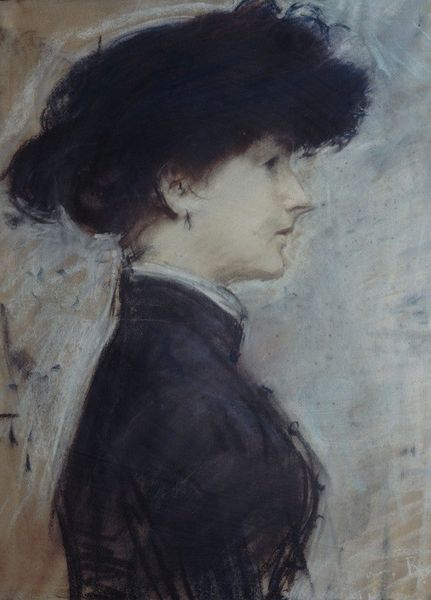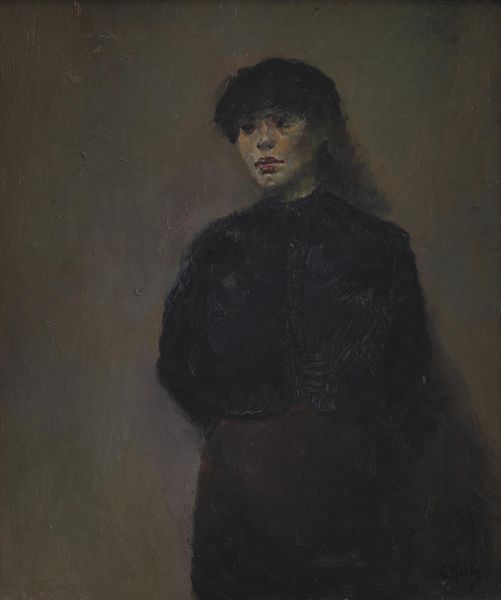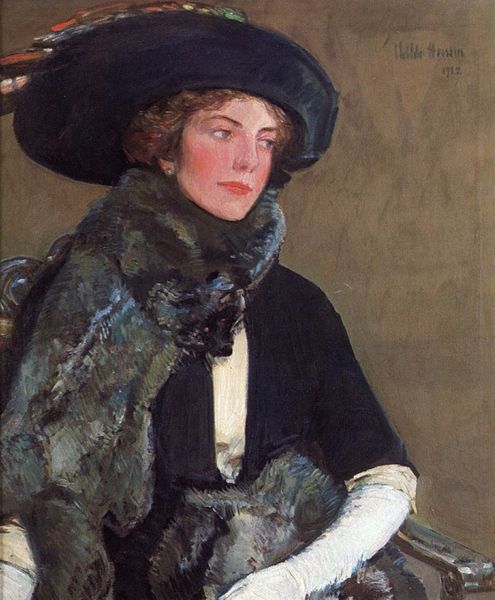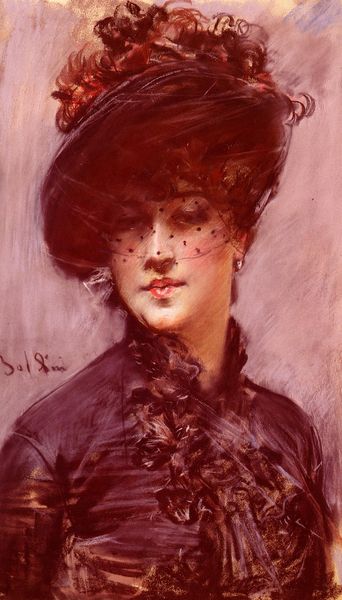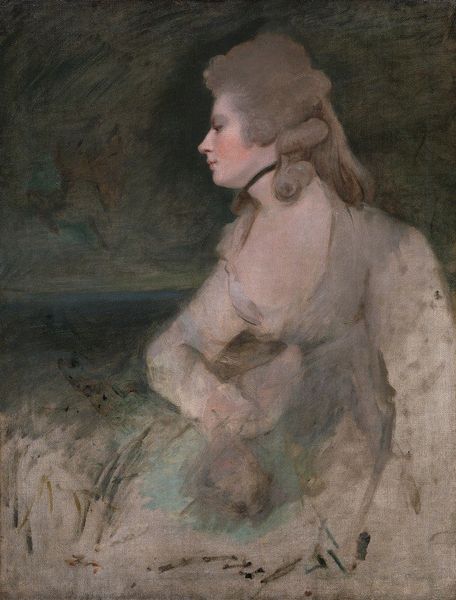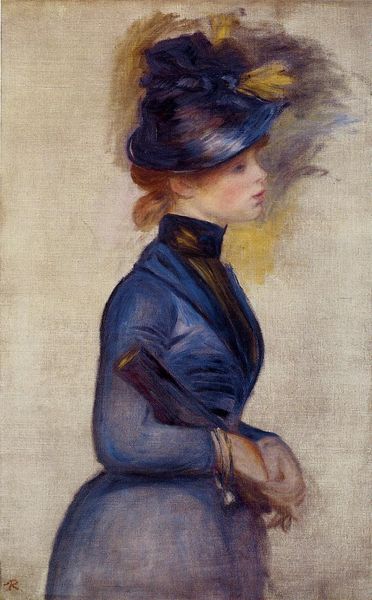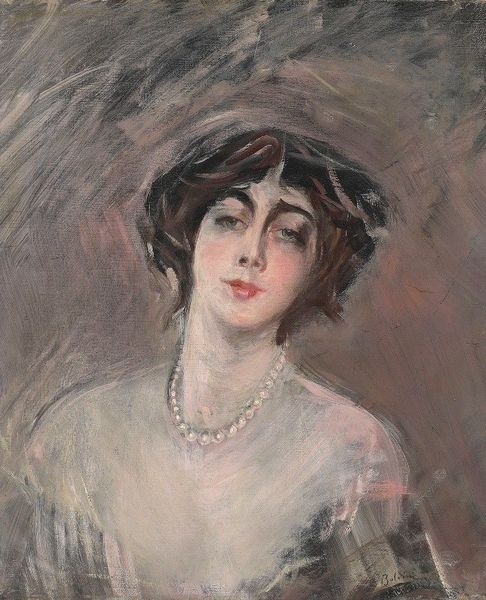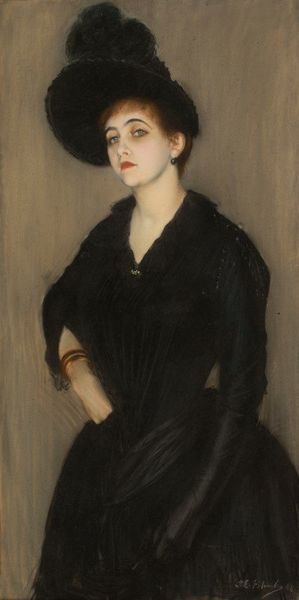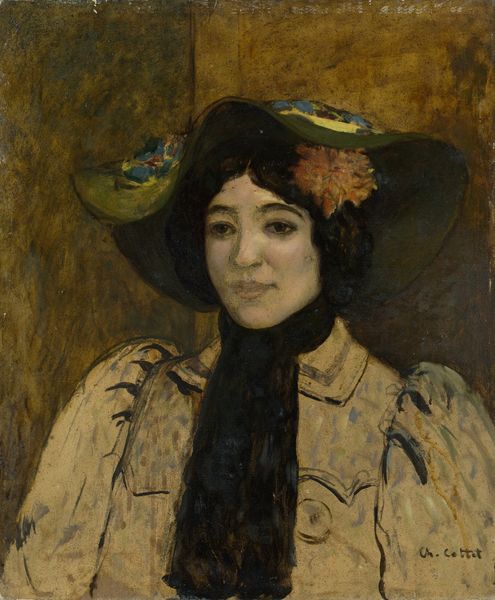
Copyright: Public Domain: Artvee
Curator: Welcome. Let's discuss Jean-Louis Forain’s 1905 oil on canvas, "Portrait de la comtesse Anna de Noailles, née Brancovan." Editor: Immediately striking is the subdued palette. Browns and blacks dominate, creating a somber mood, almost melancholic. What is your interpretation of this, especially concerning the color choices and overall composition? Curator: From a formal perspective, I’m drawn to the stark contrast between the Countess's face and the enveloping darkness. The asymmetry of the hat, partially obscuring her features, directs the gaze towards her pale complexion and the faint, distant landscape. The artist uses tonal values masterfully, suggesting form without excessive detail. Editor: It’s interesting that Forain chooses to cloak the Countess so heavily. Anna de Noailles was an incredibly prominent figure at the time—a celebrated poet known for challenging gender norms through her sensual and emotive verse. The somber palette seems to diminish her fiery persona, obscuring the radicalism of her words. This depiction stands in contrast to her literary reputation, reflecting, perhaps, society’s limited acceptance of powerful women. Curator: I understand your perspective, yet consider the period. The Impressionists were preoccupied with capturing fleeting moments, the essence of light and shadow, more than meticulous representation. Her fashionable dark attire and large hat serve less to subdue her spirit than to situate her within the artistic conventions of the period. Forain uses the sweeping lines of her costume to define the overall visual rhythm of the piece. Editor: Perhaps. However, by muting the vibrant potential of the portrait, aren't we, as viewers, confronted with the limitations imposed on even the most celebrated women of the era? The contrast between her literary rebellion and Forain's portrayal hints at a deeper conflict, a struggle for visibility. We can read it as a representation of a powerful, progressive woman confined by the norms of society. Curator: These are all very valid points about a truly evocative piece. Editor: Yes, it reminds us of the constant push and pull between individual expression and societal constraint, even when depicted within formal compositions.
Comments
No comments
Be the first to comment and join the conversation on the ultimate creative platform.
